|
|
|
|
| |
| * Did you take BIO 120 (Organismal Biology) and BIO 130 (Ecology) at Eastern? |
| |
|
|
|
|
| |
| * Did you transfer into Eastern and receive credit for BIO 120 (Organismal Biology) and BIO 130 (Ecology)? |
| |
|
|
|
|
| |
| * Have you completed or are you enrolled in BIO 220 (Cell Biology) ? |
| |
|
|
|
|
| |
| * Have you completed or are you enrolled in BIO 230 (Genetics) ? |
| |
|
|
|
|
| |
The chromosomes shown in panel 3 are being  |
| |
|
|
|
|
| |
The mitotic phase shown in panel 1 is  |
| |
|
|
|
|
| |
| If a trait has evolved through natural selection, which of the following statements must be true about that trait or population? |
| |
|
|
|
|
| |
| Island Biogeography theory is based on the assumption that |
| |
|
|
|
|
| |
| Humans are responsible for very high rates of extinction on the planet. Much of this is because of habitat degradation or loss due to: |
| |
|
|
|
|
| |
You study a species of bird that nests in tall grass. As part of a research project, you paint the eggs of this species different colors (i.e. white, brown, or green) to evaluate the relationship between egg color and nest predation rate. In light of this design, which of the following statements is true:
|
| |
|
|
|
|
| |
| In the scientific method, after we an observation in nature, the next step is to |
| |
|
|
|
|
| |
| Which of the following scenarios is an example of postzygotic reproductive isolation? |
| |
|
|
|
|
| |
| To assess the effects of a pollutant on frog development, a researcher counted the number of frogs with deformities in 20 ponds with and 20 ponds without the pollutant. What are the number of frogs with deformities in this study? |
| |
|
|
|
|
| |
| In natural communities, we general see lower biomass at higher trophic levels (e.g., fewer predators than primary producers). This is because |
| |
|
|
|
|
| |
| Individuals in populations of elk vary in the density of their fur. In a warmer climate, elk with thinner coats are more likely to survive and reproduce. The frequency of “thin coat alleles” is higher in the next generation. This describes: |
| |
|
|
|
|
| |
For a population that is experiencing density-dependent birth rates, which of the following statements is true:
|
| |
|
|
|
|
| |
Which sequence below reflects a hierarchy of increasing ecological complexity:
|
| |
|
ecosystem, population, community, biome
| |
population, ecosystem, community, biome
| |
biome, ecosystem, community, population
| |
population, community, ecosystem, biome
| |
community, population, biome, ecosystem
|
|
|
|
|
| |
The Intermediate Disturbance Hypothesis predicts a _______________ relationship between diversity and disturbance.
|
| |
|
|
|
|
| |
| In general, we expect to see grasslands instead of forests in regions with |
| |
|
|
|
|
| |
| The two most important abiotic factors that shape terrestrial ecosystems are |
| |
|
|
|
|
| |
| Sampling trees on either side of a mountain, we notice that trunks are shorter, thicker, and denser on the windy side of the mountain while the trunks are long, thin, and less dense on the less windy side. When we plant seeds from the short, thick, dense trees on the less windy side, they grow long, thin, and less dense trunks. How can we explain this? |
| |
|
|
|
|
| |
| In population growth models, r is the per capita rate of increase. If r = 0, then |
| |
|
|
|
|
| |
Which of the following graphs is most representative of simple, density-dependent population growth?
 |
| |
|
|
|
|
| |
| Evolutionarily speaking, mutualisms arise because: |
| |
|
|
|
|
| |
For populations of similar species, the tendency for characteristics to be more divergent when these species occur together than when they occur alone is known as
|
| |
|
|
|
|
| |
In the food web, the cougar represents a _______ .
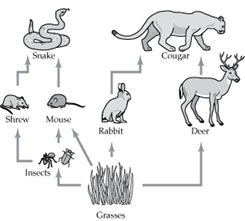 |
| |
|
|
|
|
| |
| In birds and butterflies, sex is determined by a ZW chromosome combination that is much like the typical XY combination seen in humans and many other organisms, except that the system is reversed: Males are ZZ and females are ZW. A lethal recessive allele that causes death of the embryo occurs on the Z chromosome in pigeons. What would be the sex ratio in the offspring of a cross between a male heterozygous for the lethal allele and a normal female? |
| |
|
|
|
|
| |
| In the case of flowers (RR=red, Rr=pink, rr=white), which of the following is true? |
| |
|
|
|
|
| |
| If there is random mating in a population and no evolutionary forces are acting on the population, what will be the expected outcome? |
| |
|
|
|
|
| |
| Which statement about natural selection is most correct? |
| |
|
|
|
|
| |
| What process always makes the allele frequency between two populations more similar? |
| |
|
|
|
|
| |
| What process increases homozygosity and decreases heterozygosity in a population thereby causes decline in average fitness of individuals in a population? |
| |
|
|
|
|
| |
In an animal with a diploid chromosome of 26, how many chromosomes will be found in each sperm cell?
|
| |
|
|
|
|
| |
The steps of molecular cloning are listed in the improper order. Choose the answer that lists the steps in the correct order (first step to last step).
Selection/screen for colonies
Ligation
Transformation
Digestion of vector/plasmid and insert
|
| |
|
|
|
|
| |
| There are ______ possible amino acids and _________ possible codons. |
| |
|
|
|
|
| |
| Which of the following is false about translation? |
| |
|
|
|
|
| |
- If the bottom strand of the following DNA sequence is the coding strand, which mRNA would be transcribed?
5’ ATGCGGTGCAGCGCG 3’
3’ TACGCCACGTCGCGC 5’
|
| |
|
|
|
|
| |
| An enhancer is a _______________ that functions to ________________transcription. |
| |
|
|
|
|
| |
| Insertion of which of the following would not result in a frameshift mutation? |
| |
|
|
|
|
| |
If you digested the following linear piece of DNA with HindIII, where H indicates a HindIII site and E indicates an EcoRI site, how many bands would you see on a gel?
 |
| |
|
|
|
|
| |
| Natural selection works directly on: |
| |
|
|
|
|
| |
| If eye color was X-linked, and you crossed a red-eyed fly (dominant trait) to a white-eyed fly, which of the following COULD NOT be the result? |
| |
|
|
|
|
| |
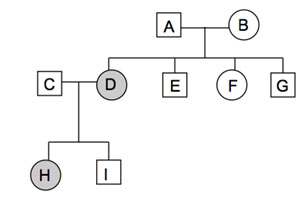
If the pedigree depicted above was showing the inheritance of an autosomal recessive trait, which individuals would have to be heterozygous (“carriers”)? |
| |
|
|
|
|
| |
| What is the role of oxygen in aerobic cell respiration? |
| |
|
|
|
|
| |
| The secondary structure of proteins is stabilized by |
| |
|
|
|
|
| |
| Some neurological diseases in mammals are caused by infectious misfolded proteins called |
| |
|
|
|
|
| |
| Dynein, kinesin, myosin are all examples of |
| |
|
|
|
|
| |
| In mammals, cholesterol is removed from the blood by binding to special receptor proteins on the surface of liver cells, causing the cell membrane to fold inward and enclose the cholesterol in a vesicle. This process is called |
| |
|
|
|
|
| |
| Some bacteria carry out a type of photosynthesis in which hydrogen sulfide is an electron donor and sulfur atoms are a waste-product. This is referred to as |
| |
|
|
|
|
| |
In bacteria, genes for mating type and antibiotic resistance are often found in plasmids, which are
|
| |
|
|
|
|
| |
| Microbiologists use Gram stain to aid in the identification of bacteria. What is the major difference between Gram-positive (Gram +) and Gram-negative (Gram-) bacteria? |
| |
|
|
|
|
| |
| In the process of carbon fixation, ribulose 1,5 bisphosphate attaches to a CO₂ to produce a six-carbon molecule, which is then split to produce two molecules of 3-phosphoglycerate. After phosphorylation and reduction produces glyceraldehyde 3-phosphate (G3P), what more needs to happen to complete the Calvin cycle? |
| |
|
|
|
|
| |
| A flask containing photosynthetic green algae and a control flask containing water with no algae are both placed under a bank of lights, which are set to cycle between 12 hours of light and 12 hours of dark. The dissolved oxygen concentrations in both flasks are monitored. Predict what the relative dissolved oxygen concentrations will be in the flask with algae compared to the control flask. |
| |
|
|
|
|
| |
| When oxygen is released as a result of photosynthesis, it is a direct by-product of |
| |
|
|
|
|
| |
| Which of the following is a protein synthesized at specific times during the cell cycle that associates with a kinase to form a catalytically active complex? |
| |
|
|
|
|
| |
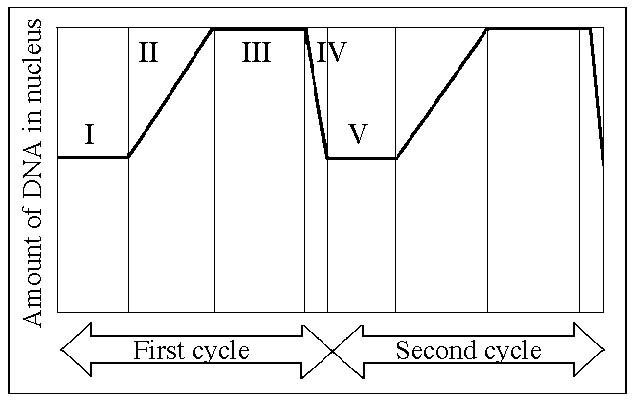
In the figure above, mitosis is represented by which numbered part(s) of the cycle? |
| |
|
|
|
|
| |
Starting with one molecule of isocitrate and ending with fumarate, how many ATP molecules can be made through substrate-level phosphorylation?
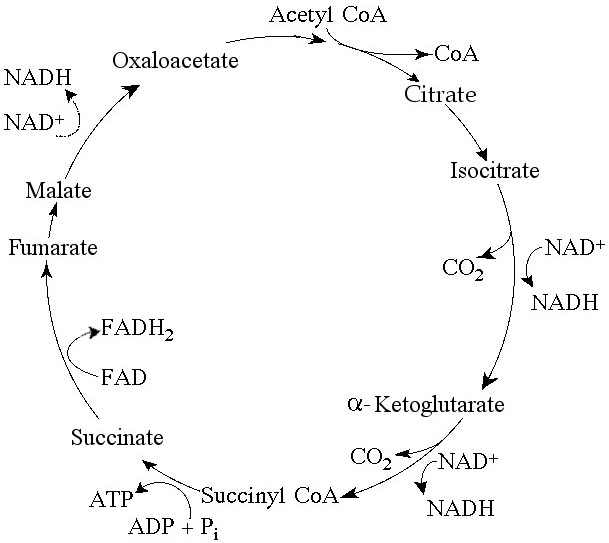 |
| |
|
|
|
|
| |
| Brown fat cells produce a protein called thermogenin (UCP1) in their mitochondrial inner membrane. Thermogenin is a channel for facilitated transport of protons across the membrane. What will occur in the brown fat cells when they produce thermogenin? |
| |
|
|
|
|
| |
| Which of the following intermediary metabolites enters the citric acid cycle and is formed, in part, by the removal of a carbon (CO₂) from one molecule of pyruvate? |
| |
|
|
|
|
| |
| The molecule that functions as the reducing agent (electron donor) in a redox or oxidation-reduction reaction |
| |
|
|
|
|
| |
| The mathematical expression for the change in free energy of a system is ΔG =ΔH - TΔS. Which of the following is (are) correct? |
| |
|
|
|
|
| |
| Succinate dehydrogenase catalyzes the conversion of succinate to fumarate. The reaction is inhibited by malonate, which resembles succinate but cannot be acted upon by succinate dehydrogenase. Increasing the ratio of succinate to malonate reduces the inhibitory effect of malonate. |
| |
|
|
|
|
| |
| This type of molecule passes through a cell membrane most easily. |
| |
|
|
|
|
| |
| Some of the drugs used to treat HIV patients are competitive inhibitors of the HIV reverse transcriptase enzyme. Unfortunately, the high mutation rate of HIV means that the virus rapidly acquires mutations with amino acid changes that make them resistant to these competitive inhibitors. Where in the reverse transcriptase enzyme would such amino acid changes most likely occur in drug-resistant viruses? |
| |
|
|
|
|
| |
Which of the following terms best describe the forward reaction in the figure?
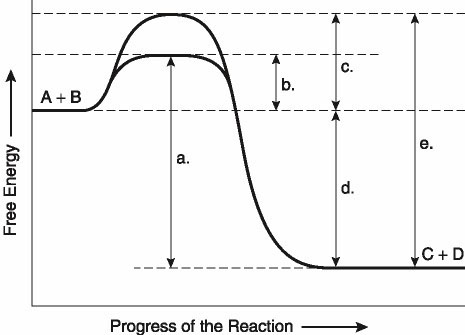 |
| |
|
|
|
|
| |
Five dialysis bags, constructed from a semipermeable membrane that is impermeable to sucrose, were filled with various concentrations of sucrose and placed in separate beakers containing an initial concentration of 0.6 M sucrose. At 10-minute intervals, the bags were massed (weighed) and the percent change in mass of each bag was graphed.
Which line in the graph represents the bag that contained a solution isotonic to the 0.6 M solution at the beginning of the experiment?  |
| |
|
|
|
|
| |
Based upon the figure, which of these experimental treatments would increase the rate of sucrose transport into the cell? 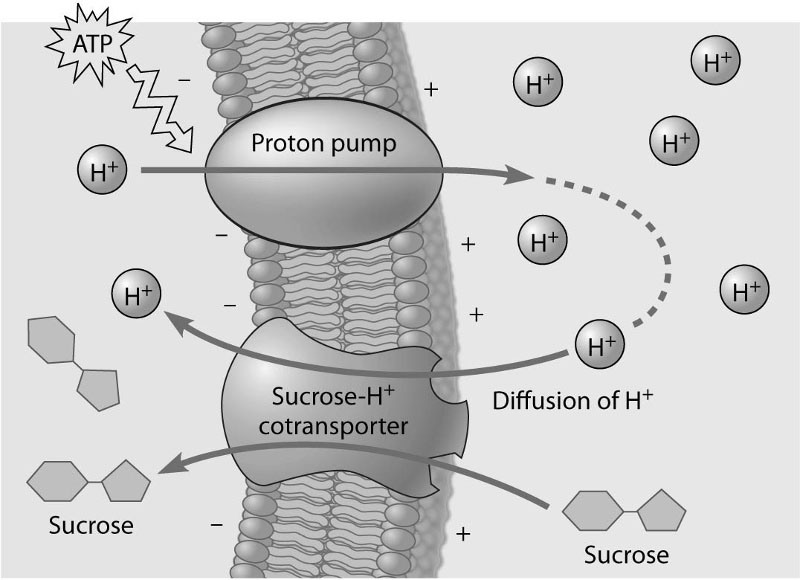 |
| |
|
|
|
|
| |
| This organism has paramylon (storage carbohydrate) and has a protein pellicle. |
| |
|
|
|
|
| |
| A chloroplast with more than two bounding membranes may have occurred due to |
| |
|
|
|
|
| |
| This cell is a product of meiosis. |
| |
|
|
|
|
| |
| This structure helps prevent cell bursting in a hypotonic (dilute) environment. |
| |
|
|
|
|
| |
| A change in one trait in more than one place on a cladogram is called a |
| |
|
|
|
|
| |
| A tree branch with leaves represents what level of organization? |
| |
|
|
|
|
| |
| This mushroom structure produces spores. |
| |
|
|
|
|
| |
| You can ensure that a plant has all of its phytochrome in the active (Pfr) form by shining this color of light onto the plant. |
| |
|
|
|
|
| |
| This structure delivers oxygenated blood to the heart. |
| |
|
|
|
|
| |
| In sponges (Porifera), this cell structure drives circulation. |
| |
|
|
|
|
| |
Which organism in the clade went extinct without leaving any descendants?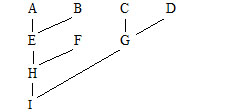 |
| |
|
|
|
|
| |
| All the living organisms on Planet Earth are a clade because they |
| |
|
|
|
|
| |
| This animal group has the most species. |
| |
|
|
|
|
| |
| A Student's t-test involving two samples from one population was performed using Excel. The resulting value is 0.04189. What is the correctly rounded value for p? |
| |
|
|
|
|
| |
| What property of life does not happen within the lifespan of an organism? |
| |
|
|
|
|
| |
| You find a lichen that is blue-green in color. It probably includes this symbiont: |
| |
|
|
|
|
| |
| This organ produces bile for fat emulsification. |
| |
|
|
|
|
| |
| This leaf tissue is responsible for photosynthesis. |
| |
|
|
|
|
| |
| The study of animal behavior is called |
| |
|
|
|
|
| |
| In most eukaryotes, the electron transport chain and oxidative phosphorylation occur in |
| |
|
|
|
|
| |
| An organism that performs glycolysis and fermentation is |
| |
|
|
|
|
| |
| What statistical value is a measure of existing variation within a population of organisms? |
| |
|
|
|
|
| |
| Organisms of the same species are likely to _________________ the resources they use than organisms of different species. |
| |
|
|
|
|
| |
| The intermediate disturbance hypothesis predicts that diversity (or richness) is highest at intermediate levels of intensity or frequency of disturbance. If disturbances are rare (e.g., few storms, rare fires, etc), what kinds of organisms are most successful? |
| |
|
|
|
|
| |
The shape of the bacteria indicated by the arrows is 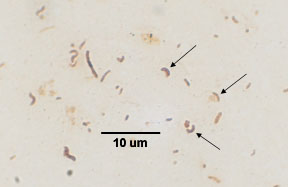 |
| |
|
|
|
|
| |
| Which of the following is a characteristic of both Archaea and Bacteria? |
| |
|
|
|
|
| |
Based on the phylogeny, if you could only conserve one of the species sets listed below, which would allow you to preserve the greatest amount of genetic diversity?
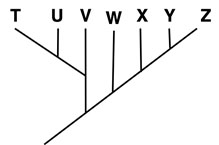 |
| |
|
|
|
|
| |
The figure illustrates which process? 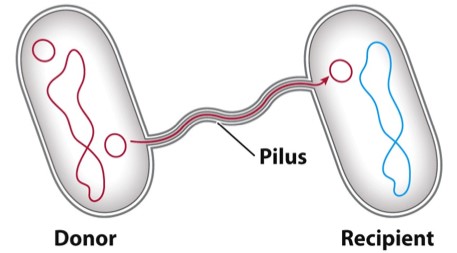 |
| |
|
|
|
|
| |
| We present figures and statistical output in the ____________ section of a scientific paper. |
| |
|
|
|
|
| |
| The phosphate is attached to which carbon in RNA? |
| |
|
|
|
|
| |
The genes for short (t) and slim (f) are both recessive mutant alleles to their respective wildtype alleles Tall (T) and Fat (F). The height and weight genes are located on the X Chromosome in Drosophila. A tall, fat female is mated to a short and fat male; they produce the following male offspring:
Phenotypes: Observed Number:
short / fat 99
short / slim 300
tall / fat 306
tall / slim 95
What is the recombination frequency between these two genes?
|
| |
|
|
|
|
| |
| What is the last enzyme that is required for bacterial DNA replication? |
| |
|
|
|
|
| |
| Which of the following is true? |
| |
|
|
|
|
| |
| If a genome had 10% C DNA bases, how many A DNA bases would it have? |
| |
|
|
|
|
| |
| Which of the following would result in very high transcription from the lac operon? |
| |
|
|
|
|
| |
| What is the function of aminoacyl-tRNA synthetases? |
| |
|
|
|
|
| |
| ________________ is a pyrimidine that forms three hydrogen bonds. |
| |
|
|
|
|